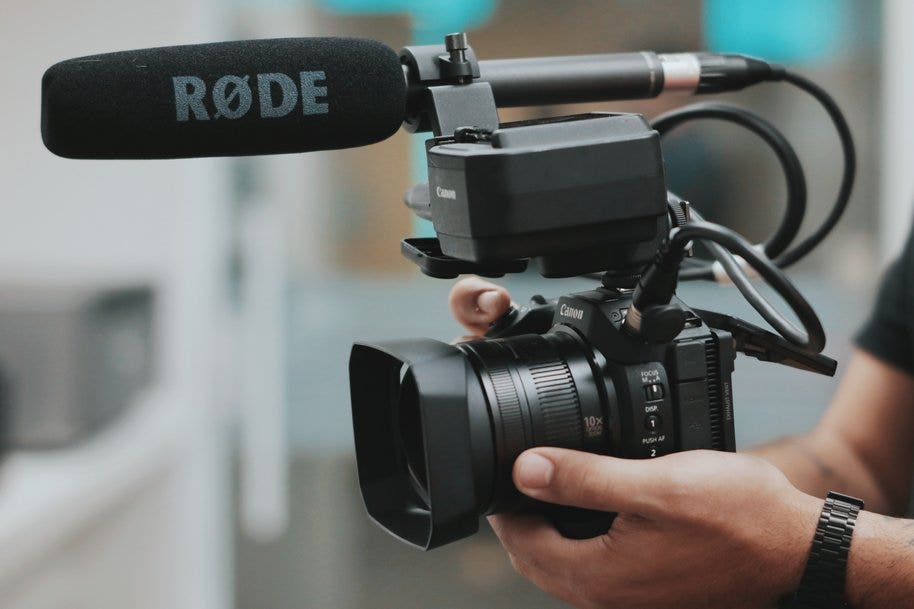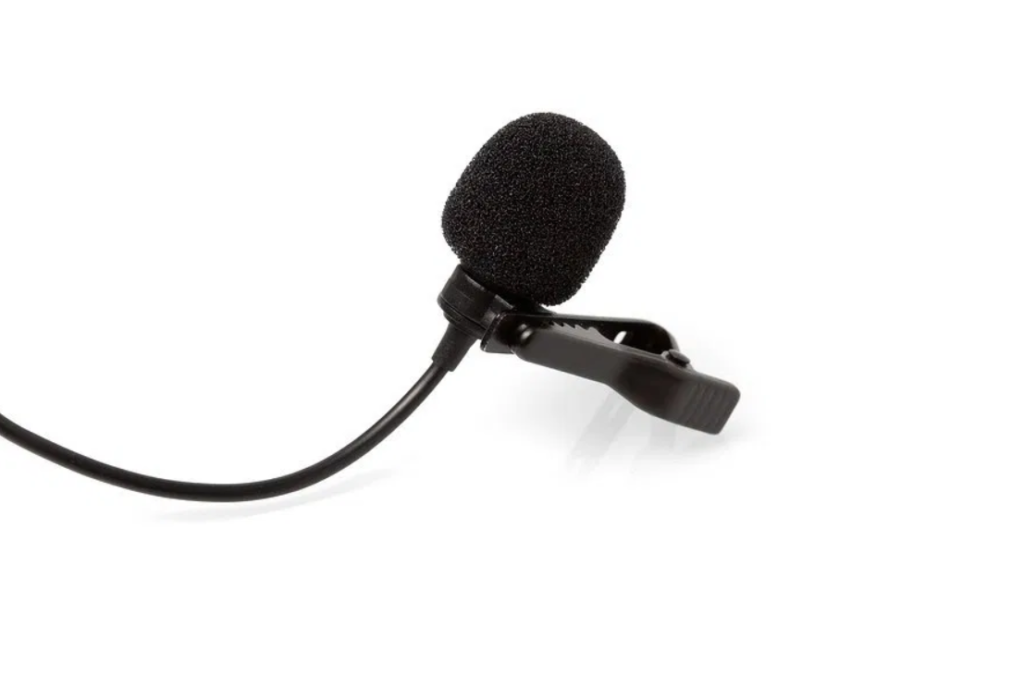
Once you make a commitment to invest in better audio quality for your videos, you have to decide which microphone is best for your needs.
There are two main types of microphones you’ll come across in your research: lavalier microphones (also called lapel microphones) and shotgun microphones (which are often operated on a boom).

Both shotgun and lavalier microphones have their pros and cons so which microphone is best for you often comes down to your budget, the size of your filming operation, and the type of scene you intend to film.
Read on to find out the main differences between shotgun and lavalier mics and discover which is best for your needs.
The lavalier microphone
Often shortened to ‘lav mic’, a lavalier microphone is a small, button-sized microphone that can be clipped onto a person’s shirt.

It’s often used in interviews, walk-and-talk scenes, and instructional videos, as well as at events. And it's ideal when you need to film a subject who moves around a lot.
A lav mic can be wired and plugged directly into a camera or audio recording device (or even a smartphone). But it’s more common to find wireless lavalier microphones, which are wired mics attached to wireless transmitters and receivers.
The pros of lavalier microphones
There’s a lot to love about lav mics, not least their ability to be placed very close to the source of the sound. Because of the proximity to the speaker’s mouth, you can catch great, professional clarity.
The wireless option means you can set your camera up further away from your subject and not be tripping over cables. Your subject also has a lot more freedom and can walk around while you're recording without compromising on audio quality.
The cons of lavalier microphones
Although more affordable than shotgun microphones, cheaper lavalier microphones don’t tend to offer the same quality as higher-end models.
But the most difficult challenge with lavalier microphones is the quality of the audio in the wrong setting. Lavalier microphones are omnidirectional, which means they can still pick up distracting background noise. Wireless microphones can also collect wireless interference, especially in dense urban environments.
If incorrectly placed, lav mics can also record noise as the mic rubs against clothes or cables.
Here are some other disadvantages to lavalier mics:
- Lapel mics can often be seen in the shot and it’s hard to conceal them without compromising on sound quality.
- It takes time to wire up people properly, especially if you want to conceal the mic.
- Wireless mics have limited battery power and can ruin a recording if the battery dies mid-shoot.
- Wireless mics can cause dropouts in audio from time to time.
Lav mics we love
The shotgun microphone
This is the preferred microphone in Hollywood film sets, thanks to its ability to absorb sound from the front and tune out noise from the sides of the mic.
Shotgun microphones are often mounted to the end of a boom pole and either set up on a stand or operated by hand. Others can be mounted to the hot shoe of your DSLR or mirrorless camera. A cable typically connects them to the camera or another recording device.

They’re often used with a windshield (also called a dead cat or a blimp), a device that helps your microphone capture crisp audio in windy situations.
The pros of shotgun microphones
Shotgun microphones generally have more consistent quality, since they often have a standard connection directly with the camera. They’re directional, rather than omnidirectional like lav mics, so they don’t pick up a lot of background noise.
They’re popular because they’re hidden from sight and you don’t have to wire up your subjects before filming. In fact, one boom operator can record two or three people.
The cons of shotgun microphones
Shotgun microphones are usually more expensive than a wireless lavalier setup - especially if you need the additional equipment, such as a stand, a boom pole, or a windshield.
Of course, if you want to follow people around and still conceal a microphone from the shot, you also need someone with the technical skills to operate the boom pole.
Shotgun mics also have a tendency to pick up sound reflections, especially if the mic is too close to the ceiling or in a small or echoey room.
And you also have the tricky task of getting the microphone as close as possible to the source of the sound while also keeping it out of the frame.
Shotgun microphones we love
Pick up your microphone online today
Have you found the right microphone for your needs? At Camera House, we have a huge selection of microphones and other audio accessories. Shop our collection online today to get flat-rate delivery across Australia.
